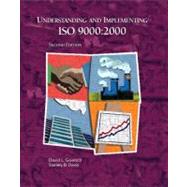
David L. Goetsch is provost of the joint campus of the University of West Florida and Okaloosa-Walton Community College in Fort Walton Beach, Florida. He also administers Florida's Center for Manufacturing Competitiveness that is located on the campus, and is president of the Institute for Corporate Competitiveness, a private company. Dr. Goetsch is cofounder of The Quality Institute, a partnership of the University of West Florida, Okaloosa-Walton Community College, and the Okaloosa Economic Development Council. He currently serves on the executive board of the Institute.
Stanley B. Davis was a manufacturing executive with Harris Corporation until his retirement in 1992. He was founding managing director of The Quality Institute and is a well-known expert in the areas of implementing Total Quality Management, statistical process control, just-in-time manufacturing, benchmarking, quality management systems, and environmental management systems. He currently serves as Professor of Quality at the Institute, and heads his own consulting firm, Stan Davis Consulting, which is dedicated to assisting private industry and public organizations throughout North America achieve world-class performance and competitiveness.
The New copy of this book will include any supplemental materials advertised. Please check the title of the book to determine if it should include any access cards, study guides, lab manuals, CDs, etc.
The Used, Rental and eBook copies of this book are not guaranteed to include any supplemental materials. Typically, only the book itself is included. This is true even if the title states it includes any access cards, study guides, lab manuals, CDs, etc.